When we consider color in the garden, we usually think of plants, furniture and decorative accents such as cushions, candles and garden art. But what about walls?
Think of this expansive surface as a blank canvas just waiting for your artistic touch. What color will you use? Will you choose one shade for the entire wall or highlight certain areas with an accent color? Will you go for an intense, highly saturated color or a softer look?
Before you reach for that can of paint, ask yourself what you are trying to say. Are you looking to create a focal point? Or perhaps you wish to merge the garden and the greater landscape? Will the wall itself be the feature, or will it showcase something else? Here are five ideas to get you started with color.
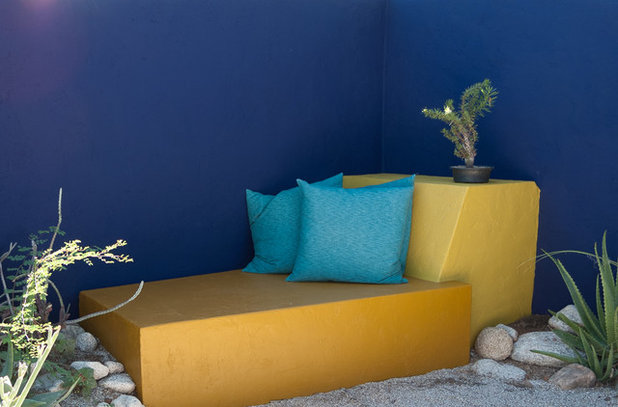
Le jardinet
1. Define function. Bold strokes of cobalt blue and golden yellow set this space apart as a refuge from the intense Arizona sun. A built-in chaise provides a cool place to sit, while soft pillows bring in more blue, reinforcing the sense of purpose even without a complete enclosure.
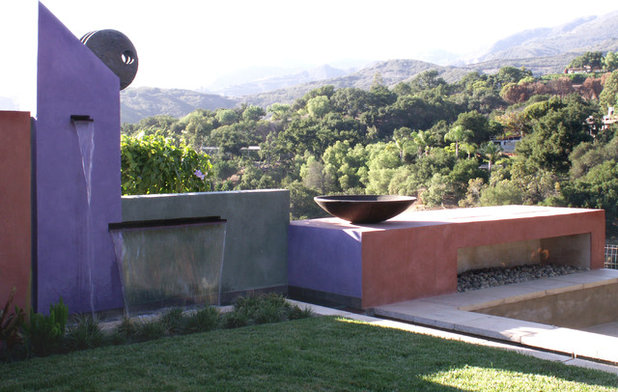
Margie Grace - Grace Design Associates
Different shapes and colors separate this contemporary retaining wall into two distinct parts — a water wall and a fireplace. The low profile frames the expansive view of the California landscape beyond, while the soft hues mimic those of the distant hills.
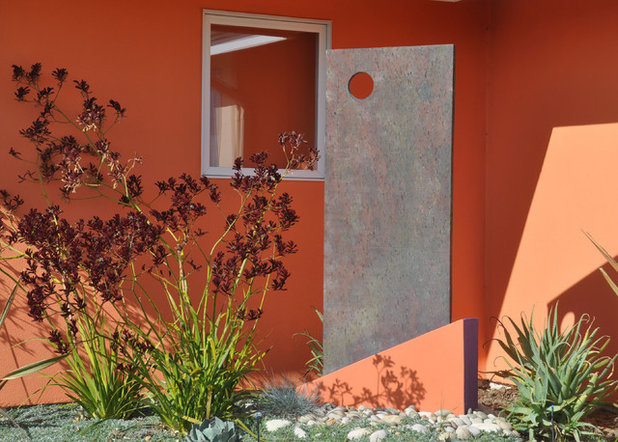
Margie Grace - Grace Design Associates
2. Showcase plants. Narrow planting strips rarely allow for layering plants, which at first may seem a disadvantage. Yet this is the perfect opportunity to use plants that have a strong architectural silhouette.
In the design here, the kangaroo paws are set off beautifully by the solid wall, while the warm coral shade adds richness to the scene and depth to the flowers. The subtle purple accent on the lower wall repeats the deeper tones and also ties into the mottled hues in the sculpture it supports. Paying attention to detail and echoing colors in this way will always create a professional look.
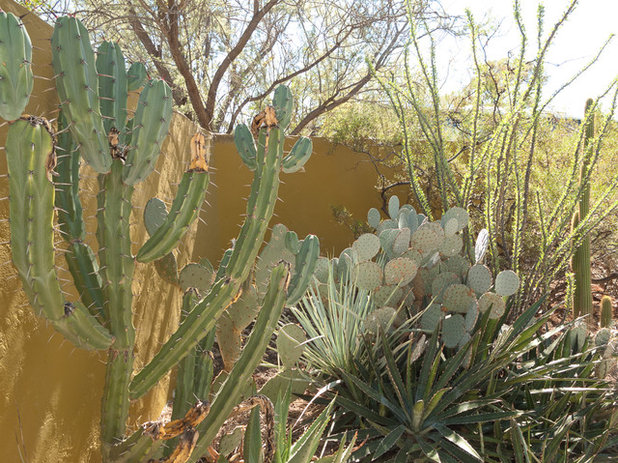
Le jardinet
Wall color does not always have to be bright to have an impact. In this example a tall olive-green wall wraps around a cactus garden, creating both privacy and a screen against which shadows can play. The result is a dramatic yet monochromatic design, and the cool colors appear refreshing despite the desert heat.
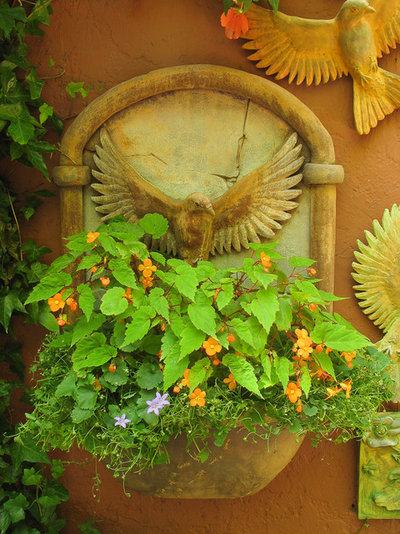
Le jardinet
3. Showcase art. This wall planter, made by
internationally acclaimed artists George Little and David Lewis, is perfectly mounted on a faux-stucco garden wall, where soft terra-cotta colors blend yet enhance one another.
While we may not all have garden art with such an impressive provenance, it is a reminder that the color of the wall is part of the overall composition.
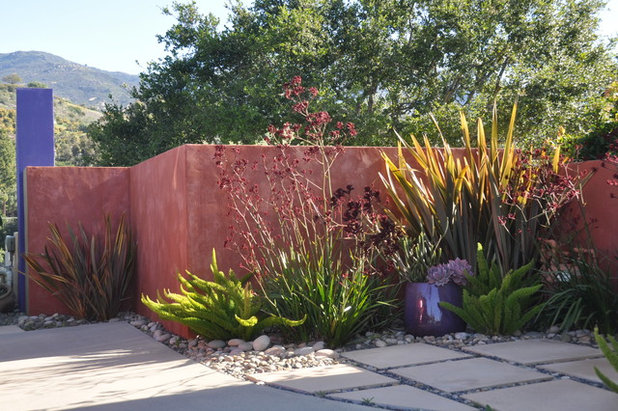
Margie Grace - Grace Design Associates
4. Showcase containers. What is the first thing you notice when you look at this photograph? That voluptuous purple pot filled with succulents. The surrounding plants provide height, sculptural form and color. yet it is the container that is the real focal point.
That splash of purple is not isolated, however. It repeats in the tall purple column at the end of the wall. Imagine this planting and container with a cedar fence or an evergreen hedge behind it — the effect wouldn’t be nearly as powerful. The dusky rose wall does not dominate the scene, however, but rather allows it to be fully appreciated.

Le jardinet
A change of wall color can transform an awkward corner, especially when a decorative container in a similar color is added. Even these humble marigolds look like a Van Gogh composition in this frame.
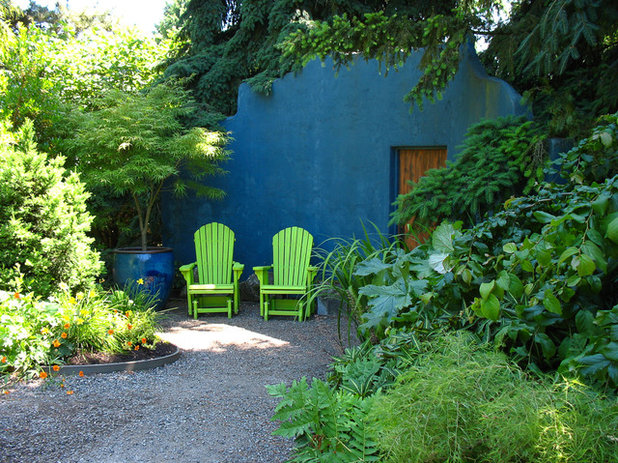
Le jardinet
5. Disguise an eyesore. Seattle designer Tina Dixon created this faux-adobe facade as a focal point in her garden, but it has a second equally important role — it disguises a large garden shed. Because the sides are masked with dense plantings, creating a secluded seating nook, first-time visitors are easily fooled.
Cobalt blue is Dixon’s signature color, used throughout her garden on fences, pergolas and containers, so it was a natural choice here. Don’t be afraid of using bold color on the walls in
your garden. It’s only paint, so you can always change it to suit your style.
See more ways to be bold with color in and around your home





